There can be your advertisement
300x150
Unveiling 4 Key Composition Techniques in Interior Design
How not to turn your apartment into a furniture exhibition or showroom, revealing the secrets
To transform your apartment into more than just a furniture display and instead create a thoughtfully planned and ergonomic living space, consider the composition of interior design. There are techniques that will help you create a cozy environment for living. We explore these in detail with interior decorator Anastasia Filimonova.
Anastasia Filimonova — Interior Decorator. She creates a unified and harmonious style for your home.
Let's start with the definition: interior composition is the artistic connection of all elements in a specific space, which should be arranged in a particular order and quantity to support the overall idea of a harmonious image.
The ingredients of interior design from which composition is built:
- color;
- texture;
- size;
- material;
- form;
- orientation (vertical/horizontal).
Rules and techniques of composition have come to us from the artistic environment. The main compositional techniques: symmetry, asymmetry, rhythm, dominance.
 Symmetry
SymmetrySymmetry is the equal distance arrangement of elements relative to the compositional center. To create symmetrical balance, you need to define a central point exactly in the middle of one of the walls or at the center of the room. In other words, the compositional center is an axis, with elements mirroring each other on both sides of it.
Examples of symmetry in the horizontal plane: two nightstands beside the bed, shelves on both sides of a window, two sofas facing each other.

Another example of symmetry in the horizontal plane: two sofas facing each other.
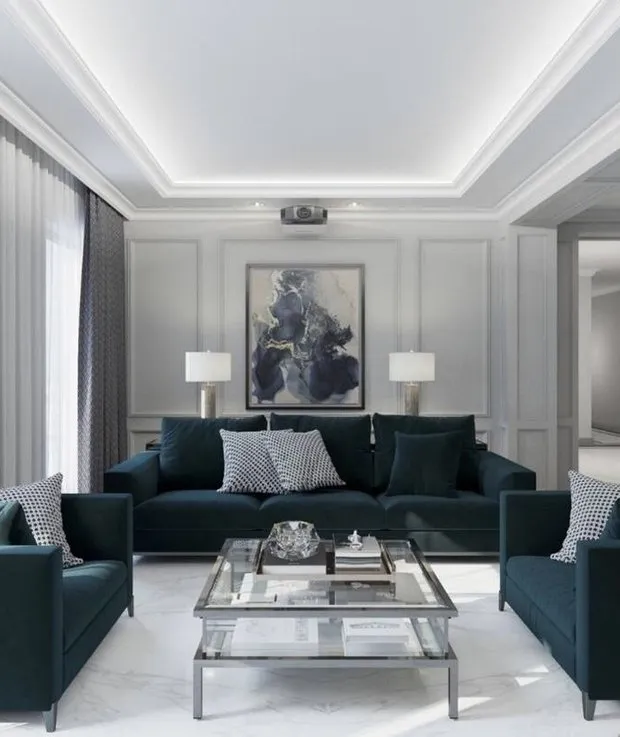
Symmetry is perceived by our eyes as a harmonious and organized composition. This technique creates balance in the composition not only in scale but also in tone, color, and texture. Symmetry is characteristic of classical and conservative styles and works well in large rooms.
Example of symmetry in the vertical plane: high ceilings, allowing for hanging a long chandelier and paintings at eye level on the walls.

Symmetry in the horizontal plane: shelves on both sides of a desk.
 Asymmetry
AsymmetryAsymmetry is the opposite of symmetry in composition techniques. When creating an asymmetrical interior, you can choose a compositional center displaced from the central point or axis. This technique is excellent for any modern style and works well in any scale.

Asymmetry can be created with: corner sofas, furniture of different heights, asymmetrical hanging pictures and posters, curtains on one side, small and large coffee tables. By the way, paintings are a simple way to introduce asymmetry into an interior since they come in various forms, sizes, and subjects. If you want to apply this method, recommendations in this article will help you.
Example: if a large sofa is on one side of the room and a small coffee table on the other, then in the center for texture balance, a decorative item or sideboard.

 Rhythm
RhythmRhythm is characterized by regularity and repetition. Rhythm can be expressed through the repetition of patterns, colors, textures, sizes, and materials. Let's look at several ways to use rhythm. One method is repetition of forms and lines. If some piece of furniture feels foreign, it should be repeated. For example, if you bought a round coffee table and all other furniture has straight forms, then you can repeat the shape in a round table lamp or floor lamp. If there's no space for a new piece, you can select semi-circular handles for the sideboard.

A simple way to use rhythm is paired items. For example, a pair of elegant floor lamps on both sides of the console table, side tables next to the sofa.
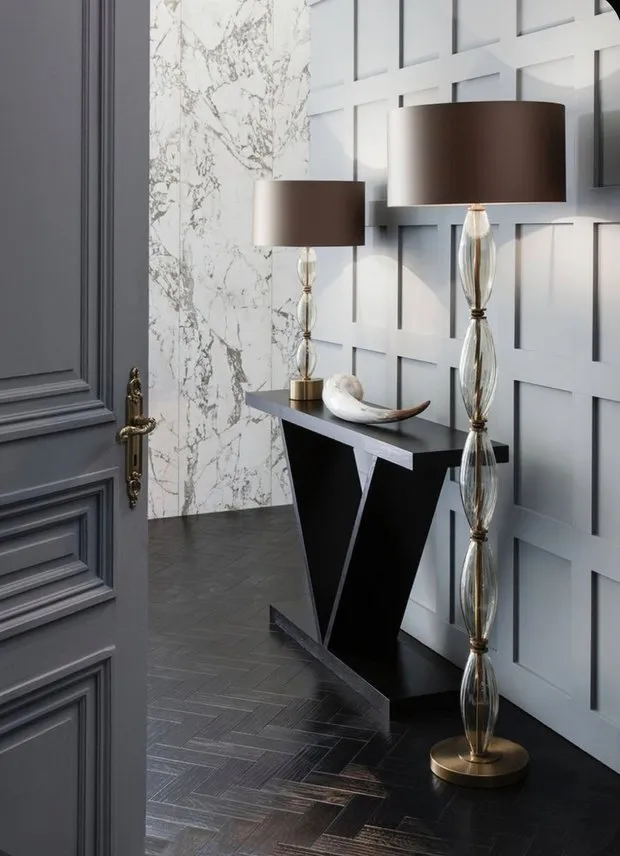
A simple but always effective way to create rhythm is by using decorative pillows. If the pillows resonate with the color of furniture, they will help unite the space. The tone of the pillows can be changed, for example, if you have blue curtains, a light blue pillow would work.
 Dominance
DominanceDominance is the visual center of composition, where attention first goes to the dominant element and then to other items. This technique can be expressed using scale and color of furniture, patterns, textures, lighting fixtures, and other accessories in the space.
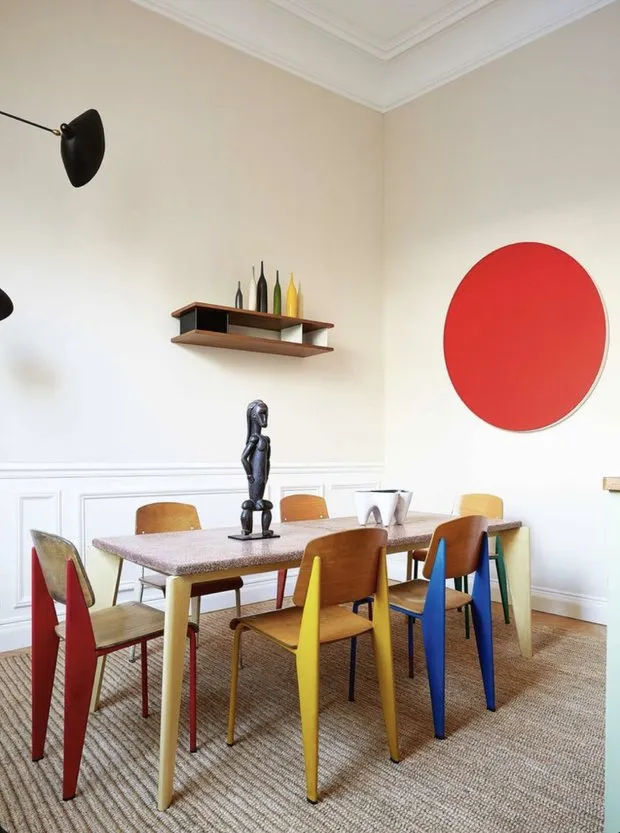
As you can see, composition is not as complicated as it might seem. These techniques will help you create a cohesive and harmonious space.
Back to the Future: 7 Amazing Bathrooms in Retro Style
More articles:
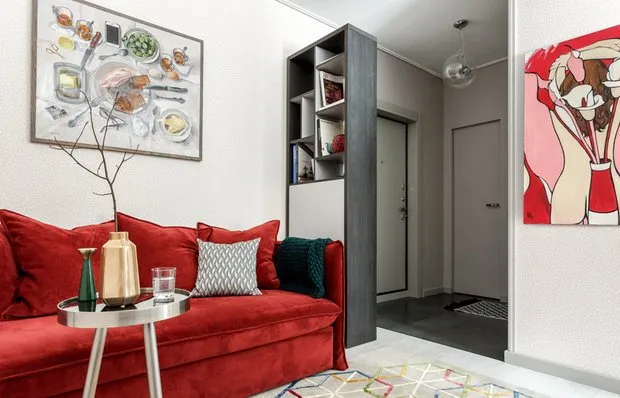 Large Corridor and Balcony on the Kitchen. What to Do with Useless Meters?
Large Corridor and Balcony on the Kitchen. What to Do with Useless Meters?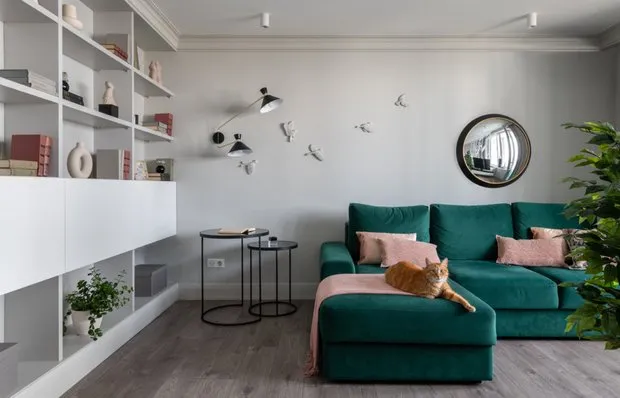 5 Cool Design Ideas That Helped Save Money on Renovation
5 Cool Design Ideas That Helped Save Money on Renovation Hygge in Russian: 6 Cozy Small Apartments in Scandinavian Style
Hygge in Russian: 6 Cozy Small Apartments in Scandinavian Style How to Transform Developer-Provided Renovation: 4 Budget-Friendly Options
How to Transform Developer-Provided Renovation: 4 Budget-Friendly Options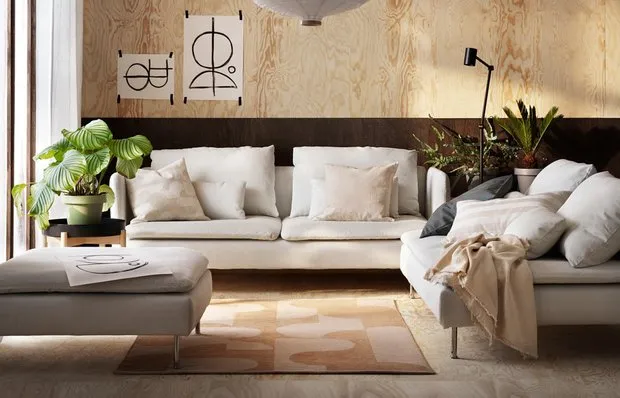 Want It All! 10 February IKEA New Arrivals
Want It All! 10 February IKEA New Arrivals 7 Design Hacks We Spotted in Projects
7 Design Hacks We Spotted in Projects 12 Eco-Friendly IKEA Products You'll Love
12 Eco-Friendly IKEA Products You'll Love Bedroom in a Studio Apartment: 5 Simple Solutions from Our Design Projects
Bedroom in a Studio Apartment: 5 Simple Solutions from Our Design Projects